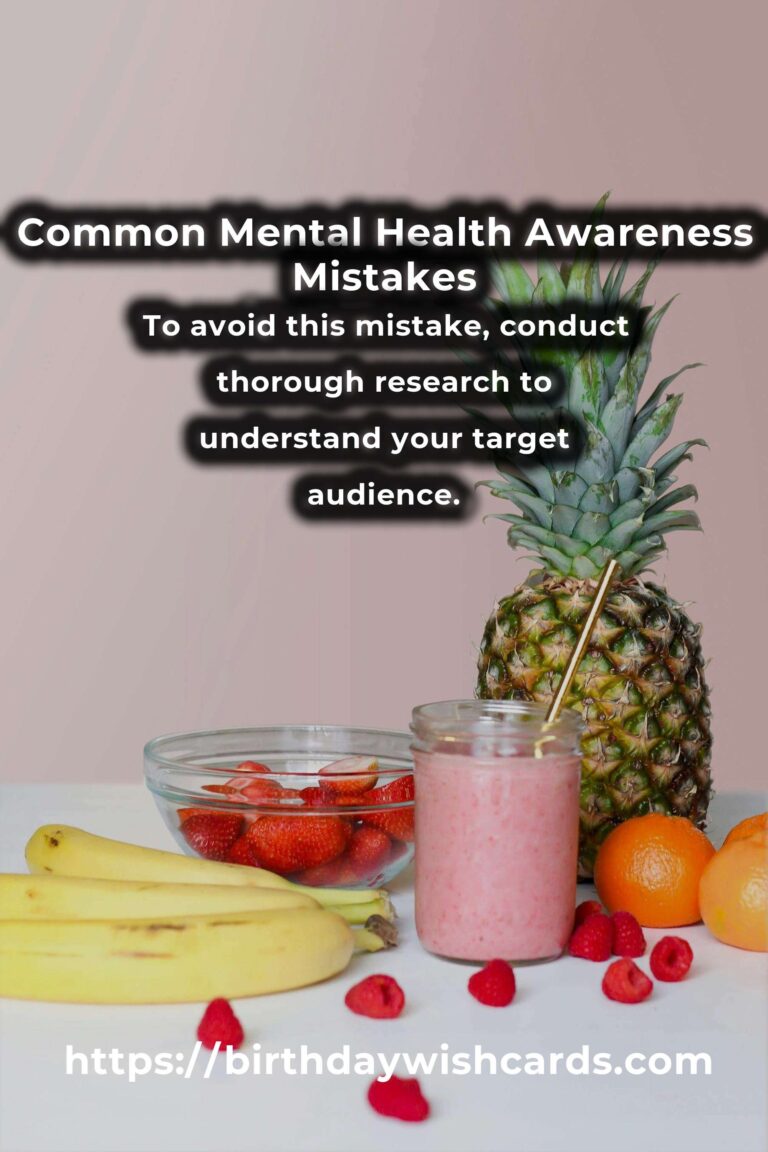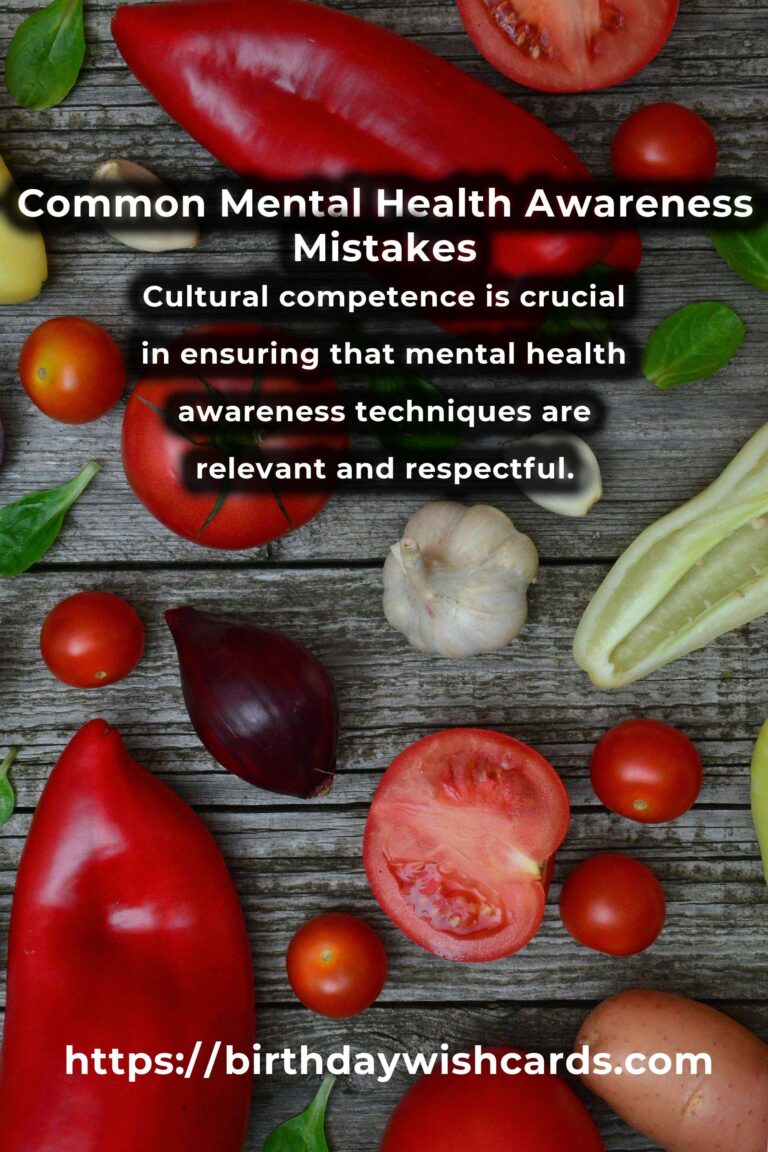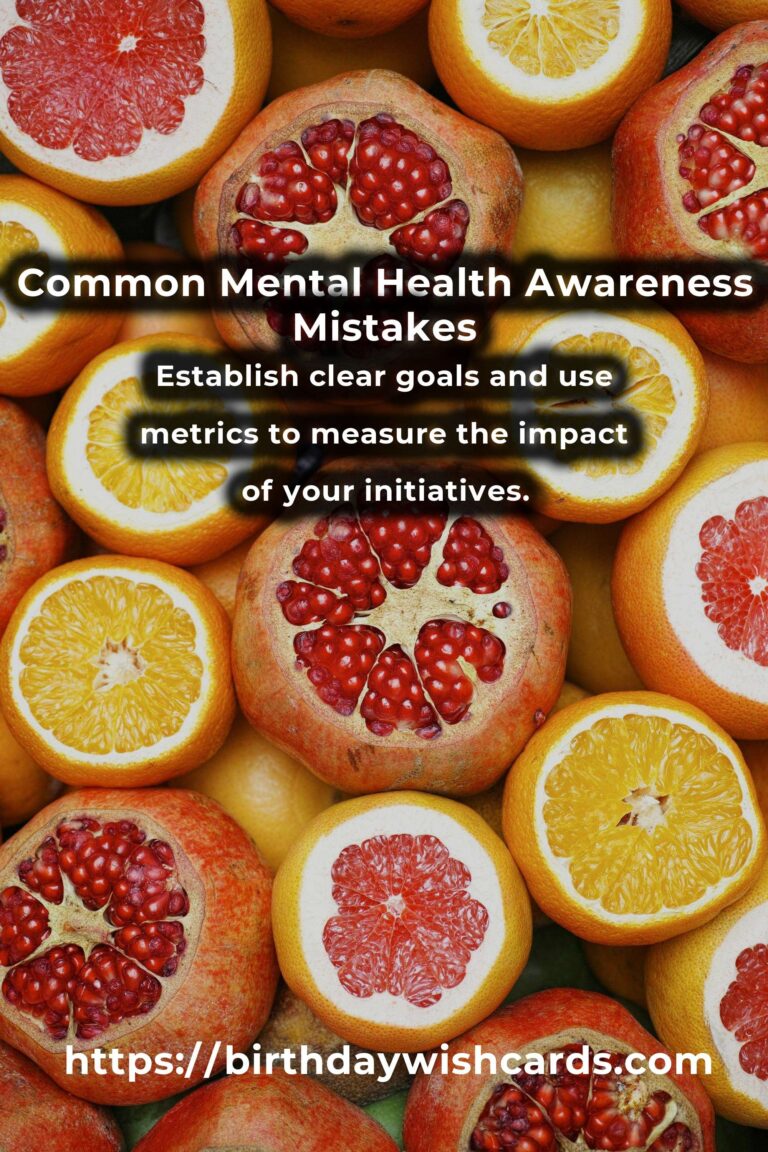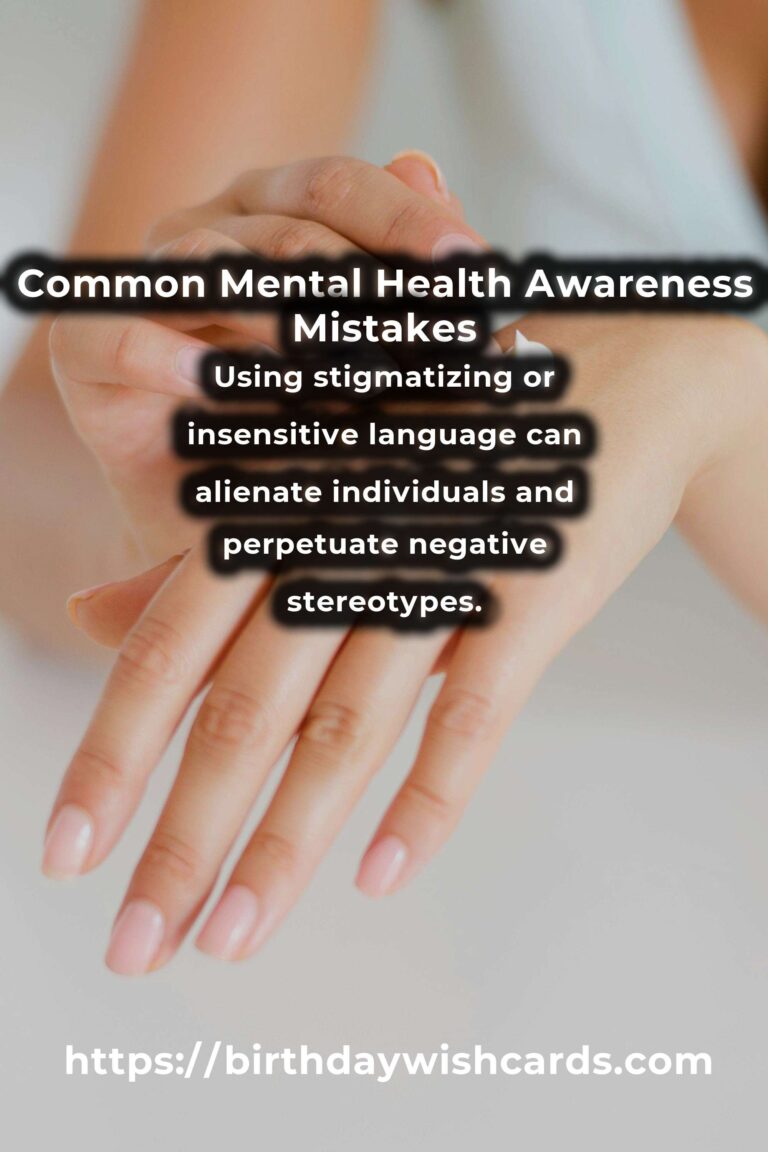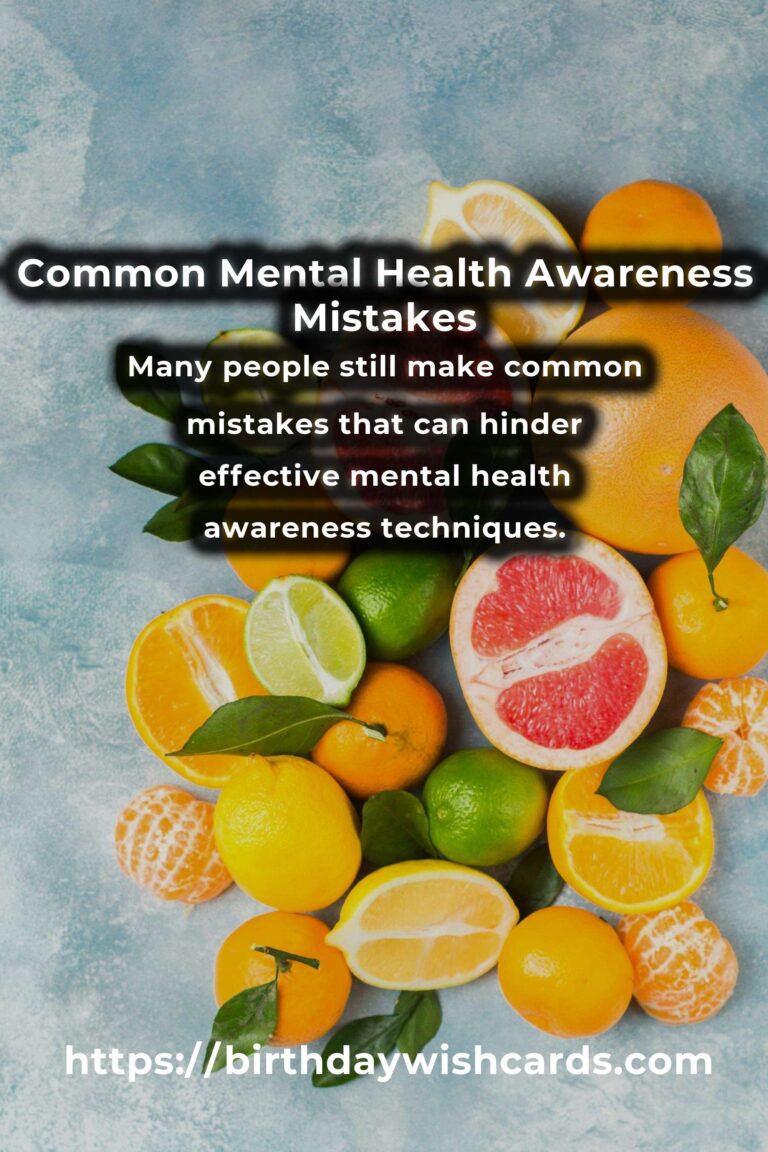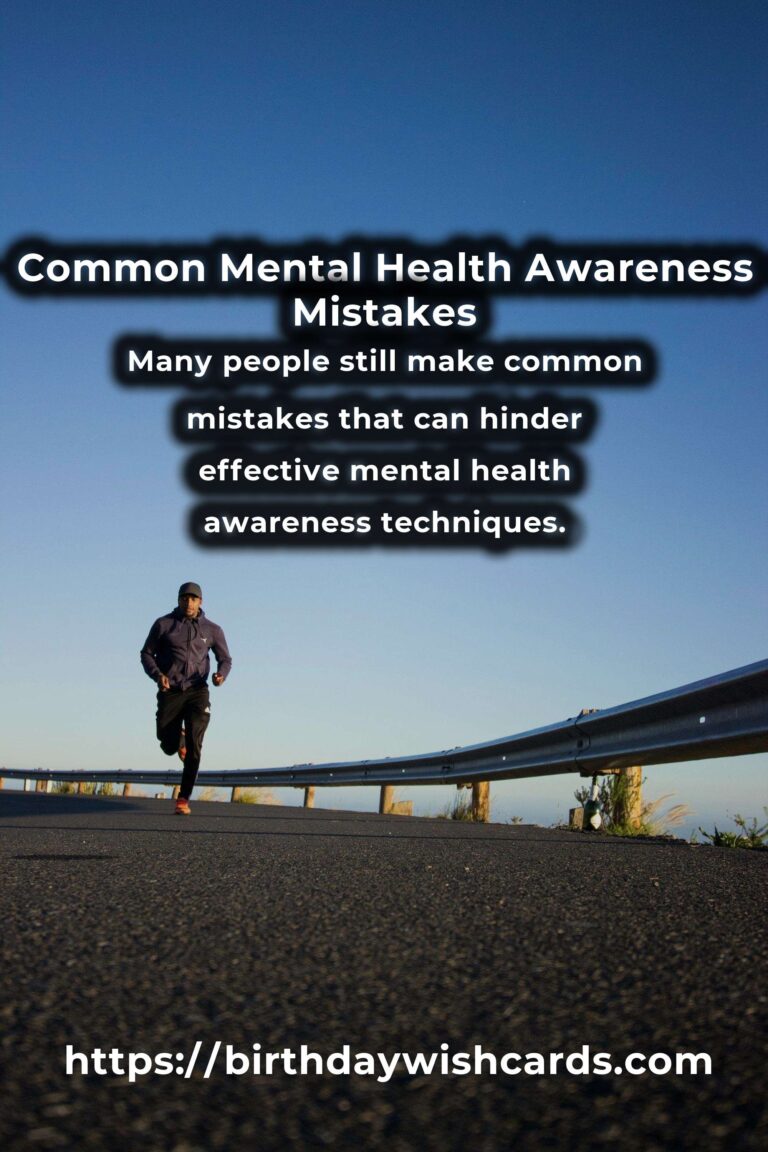
Mental health awareness has become a pivotal component of overall health education and advocacy. Despite the growing focus, many people still make common mistakes that can hinder effective mental health awareness techniques. Understanding and avoiding these mistakes can significantly enhance the impact of mental health initiatives.
1. Lack of Personalization in Awareness Campaigns
One of the most frequent mistakes in mental health awareness is the failure to personalize campaigns. Many campaigns use generic messages that fail to resonate with diverse audiences. It’s crucial to tailor messages to specific groups, considering factors like age, culture, and personal experiences, to ensure they are relatable and effective.
To avoid this mistake, conduct thorough research to understand your target audience. Develop personas and create messages that speak directly to their experiences and needs. Utilizing focus groups and feedback sessions can also help refine these messages.
2. Overemphasis on Statistics and Neglect of Personal Stories
While statistics are important for illustrating the scope of mental health issues, overreliance on numbers can make campaigns impersonal. Personal stories and testimonials can have a more profound impact, as they humanize the issue and foster empathy.
Incorporate personal stories into your awareness techniques by inviting individuals to share their experiences. This approach not only engages audiences but also breaks the stigma by normalizing discussions around mental health.
3. Ignoring the Importance of Language
The language used in mental health awareness is critical. Using stigmatizing or insensitive language can alienate individuals and perpetuate negative stereotypes. It’s essential to use language that is respectful, inclusive, and empowering.
To avoid this mistake, ensure that all materials are reviewed by mental health professionals and individuals with lived experiences. Training sessions on mental health literacy for those involved in the campaign can also enhance sensitivity and appropriateness.
4. One-Time Events Instead of Continuous Engagement
Many awareness initiatives focus on single events, such as Mental Health Awareness Month, and fail to maintain momentum throughout the year. A single event might raise awareness temporarily but does little to foster long-term change.
To ensure continuous engagement, integrate mental health awareness into regular programming. Create ongoing workshops, support groups, and educational seminars that keep the conversation alive and provide consistent support and resources.
5. Failure to Address Cultural Differences
Mental health is perceived differently across cultures, and a one-size-fits-all approach is ineffective. Cultural competence is crucial in ensuring that mental health awareness techniques are relevant and respectful to all communities.
Avoid this mistake by collaborating with cultural leaders and organizations to develop culturally sensitive materials. Training staff in cultural competence can also enhance the effectiveness of these initiatives.
6. Not Measuring the Impact of Awareness Techniques
Without measuring the impact of mental health awareness techniques, it’s challenging to determine their effectiveness. Many campaigns fail to set clear objectives or collect data to evaluate success.
Establish clear goals and use metrics to measure the impact of your initiatives. Surveys, feedback forms, and participation rates are useful tools for assessing progress and areas for improvement.
Conclusion
Avoiding these common mistakes can significantly enhance the effectiveness of mental health awareness techniques. By personalizing messages, incorporating personal stories, using appropriate language, ensuring continuous engagement, respecting cultural differences, and measuring impact, mental health initiatives can become more impactful and foster a more informed and supportive society.
Many people still make common mistakes that can hinder effective mental health awareness techniques. To avoid this mistake, conduct thorough research to understand your target audience. Personal stories and testimonials can have a more profound impact, as they humanize the issue. Using stigmatizing or insensitive language can alienate individuals and perpetuate negative stereotypes. Create ongoing workshops, support groups, and educational seminars that keep the conversation alive. Cultural competence is crucial in ensuring that mental health awareness techniques are relevant and respectful. Establish clear goals and use metrics to measure the impact of your initiatives.
#MentalHealthAwareness #MentalHealth #AwarenessTechniques #Personalization #CulturalCompetence #ContinuousEngagement


